Dalia Savy
AP Calculus AB/BC ♾️
279 resourcesSee Units
Multiple Choice Practice for Parametric Equations, Polar Coordinates & Vector-Valued Functions
Welcome to Unit 9 AP Calculus Multiple Choice Questions! Grab some paper and a pencil 📄 to record your answers as you go. You can see how you did on the Unit 9 Practice Questions Answers and Review sheet once you're done. Don't worry, we have tons of resources available if you get stumped 😕 on a question. And if solo study is not your thing, join a group in Hours!
Not ready to take a quiz yet? Start studying unit 9 here: Intro to Unit 9
Parametric graph created in Desmos.
Facts about the test: Both the AP Calculus AB and BC exams have 45 multiple-choice questions and you will be given 1 hour and 45 minutes to complete the section. This means it should take you about 35 minutes to complete 15 questions.
*The following questions were not written by CollegeBoard and although they cover information outlined in the AP Calculus AB/BC Course and Exam Description, the formatting on the exam may be different.
1. Which of the following is the derivative formula for differentiating a parametric equation?

2. Given x = 2√t and y = 3t^2 -2t. Find dy/dx. Evaluate at t=1.
A. -4
B. -2
C. 4
D. 0
3. What is the second derivative formula for a parametric equation?
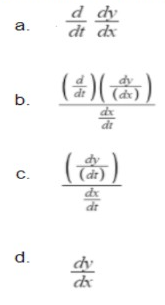
4. Find all the points of horizontal and vertical tangency given x = t^2 + t and y = t^3 - 3t + 5.
A. t = -1 and -1/2
B. t = 1 and -1/2
C. t = 1 and -1
D. t = 1, -1, and -1/2
5. What is the arc length formula for a parametric equation?
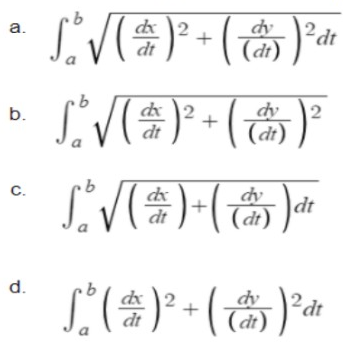
6. What is the distance traveled by the object from t=1 to t=7 if the functions are dx/dt = tsin(t) and dy/dt=cos(t^2)
A. 15
B. 14.802
C. 13.015
D. 16
7. To find the speed of the particle, you take the absolute value of the…
A. position vector.
B. velocity vector.
C. acceleration vector.
D. displacement vector.
8. When converting between polar and rectangular coordinates, you can use the following formulas to help you find x and y:
A. x = rcosθ and y = rsinθ
B. y = rcosθ and x = rsinθ
C. y=cosθ and x = sinθ
D. x = cosθ and y = sinθ
9. The formula to find the derivative of a polar function is:

10. What is the area formula for one polar curve?
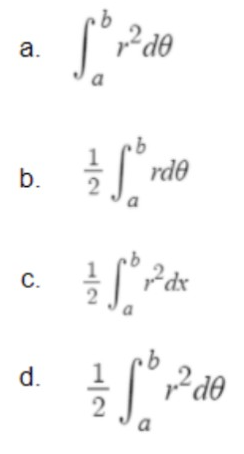
11. Find the area bounded by the graph of r = 3 + 3sinθ.
A. 42
B. 42.412
C. 21
D. 21.206
12. What is the formula for the polar area between two curves?
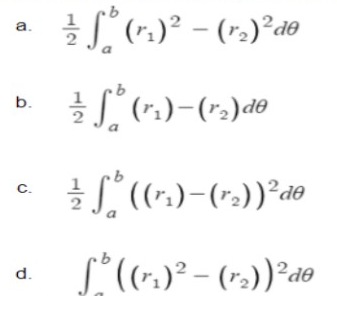
13. Find the area inside the smaller loop of the limacon r = 2cosθ + 1.
A. 1
B. 0.6
C. 0.544
D. 0.78
14. Determine the area that is inside r = 3 + 2sinθ and outside r = 2.
A. 23
B. 24
C. 24.187
D. 25
15. What is the arc length formula of a polar curve?
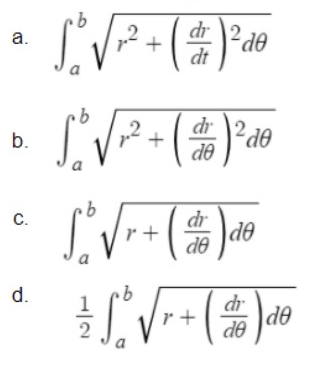
🙌Time to Check Your Answers on Unit 9 Practice Questions Answers and Review!
🤝Connect with other students studying AP Calculus with Hours
Browse Study Guides By Unit
👑Unit 1 – Limits & Continuity
🤓Unit 2 – Fundamentals of Differentiation
🤙🏽Unit 3 – Composite, Implicit, & Inverse Functions
👀Unit 4 – Contextual Applications of Differentiation
✨Unit 5 – Analytical Applications of Differentiation
🔥Unit 6 – Integration & Accumulation of Change
💎Unit 7 – Differential Equations
🐶Unit 8 – Applications of Integration
🦖Unit 9 – Parametric Equations, Polar Coordinates, & Vector-Valued Functions (BC Only)
♾Unit 10 – Infinite Sequences & Series (BC Only)
🧐Multiple Choice Questions (MCQ)
✍️Free Response Questions (FRQ)
📆Big Reviews: Finals & Exam Prep

Fiveable
Resources
© 2023 Fiveable Inc. All rights reserved.